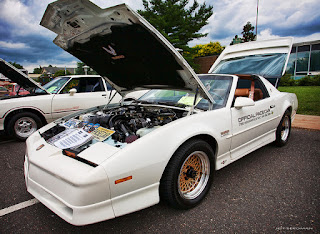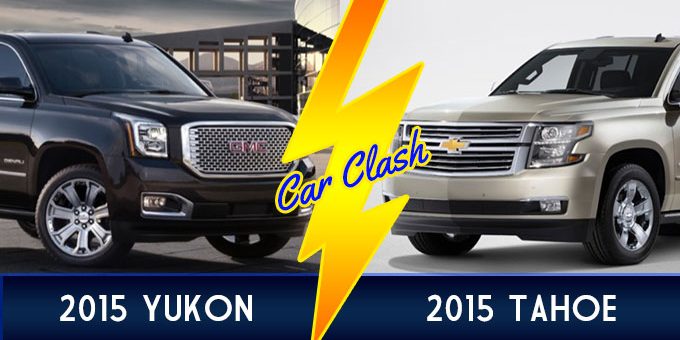Back in 1991, the dog days of the sad, slow, so-called economy-efficient sports cars were starting to come to an end. The Tuned-Port Injection (TPI) setups that General Motors was using for their sports were about to be replaced by a much more stout performing LT1 350-cu.-in. engine.
But before the change, the GMC truck division of General Motors made an interesting move to get involved in some of the performance hype GM was encouraging at the time. GMC signed a contract with an aftermarket performance company called PAS (Production Automotive Systems). PAS and GMC joined forces to create the fastest production trucks of its time: the 91 GMC Syclone pickup truck and the 92-93 GMC Typhoon SUV.
The PAS company was no stranger to this type of work. Pontiac called upon them to help build the now-famous
1989 Turbo Trans Am 20th Anniversary Edition. Oddly enough, Pontiac kept it simple when building this sports car and went with what already worked for Buick by using the very successful 86 and 87 Grand National drivetrain setup. The turbocharged intercooled 3.8-liter V6 was already tormenting sports cars on the streets and at the track.
1989 Turbo Trans Am 20th Anniversary Edition. Oddly enough, Pontiac kept it simple when building this sports car and went with what already worked for Buick by using the very successful 86 and 87 Grand National drivetrain setup. The turbocharged intercooled 3.8-liter V6 was already tormenting sports cars on the streets and at the track.
A Turbocharged Truck Was Buick's Idea
Originally, Buick came up with the idea for the turbocharged truck, but to avoid conflict with the GMC truck production branch, Buick handed the idea over to GMC. There was some hesitation to take on the project since Chevrolet already had a similar black regular cab pick-up truck on the market with a 454 cu.-in. engine.
But some forward-thinking engineers and designers saw the potential in smaller engines. Assuming Buick could make it work in a G-Body grocery-getter with much success, doing the same in a small truck and an SUV should work just as well, and to nobody's surprise, it did.
Similar Buick Setup But A Bigger Engine For The Syclone and Typhoon
The PAS company engineered a 4.3-liter Vortec engine equipped with a turbocharger and an intercooler to fit in both the Syclone and the Typhoon.
To efficiently transfer engine power to the wheels, both models would receive the four-speed 700R4 automatic transmission, the same transmission that many GM vehicles came with including GM sports cars and the Buick turbo cars.
The First Factory-Built All-Wheel-Drive Technology Used For Drag Racing Performance
What made the Syclone and the Typhoon so unique from other trucks is that they used a very performance-efficient all-wheel-drive system. This technology helped these trucks with an underrated, unofficial horsepower rating of 280 get down the quarter-mile with times that would stop the clocks somewhere in the high-to-mid 13-second range.
Since the GMC 4.3-liter turbo technology was so similar to the successful Buicks 3.8-liter turbo cars, aftermarket part dealers and car enthusiasts knew exactly what easy upgrades could be made to make these trucks amazingly performance efficient. I've personally seen Typhoons run in the high 10-second range and Syclones being lighter in weight, stop the clocks in the 9s.
GMC Syclone and Typhoon: Unbeatable Deal
With great gas mileage, excellent performance, and the fact that they were limited production, the GMC Syclone and Typhoon were and are still collector items for all car enthusiasts alike.
With production numbers of only 2,998 '91 Syclones, 2,500 in '92, and 2,200 '93 Typhoons built, the price tags on these rare trucks still stay up in the $15,000 to $25,000 range for the ones that are still in good condition.
Unfortunately, the PAS company based in Troy, MI., which was responsible for the GMC Syclone and Typhoon's engineering and design would go out of business sometime after GM decided not to go forward with any more specialized GMC vehicles.
The decision to move forward without PAS-specialized vehicles was mostly due to the progression of the Corvettes, Camaros, and Trans Ams, and the need to focus on the new technology of electric vehicles.
That may have sounded silly then, but now, all auto companies have moved in the electric vehicle direction, and GM predicts by 2035, the only vehicles they will be producing are going to be all-electric vehicles. We'll see how that works out!
Syclones and Typhoon GENERAL SPEC
Type: V6 GMT300
Disp.: 262 C.I. (4.3L)
Transmission: 700R4
Drive: All-Wheel Drive
Syclone Horsepower: 280 Horsepower and 350 lb.-ft. of Torque
MPG: 17 city and 19 highway
Typhoon Horsepower: 285 Horsepower and 350 lb.-ft. of Torque
MPG: 14 city and 17 highway







